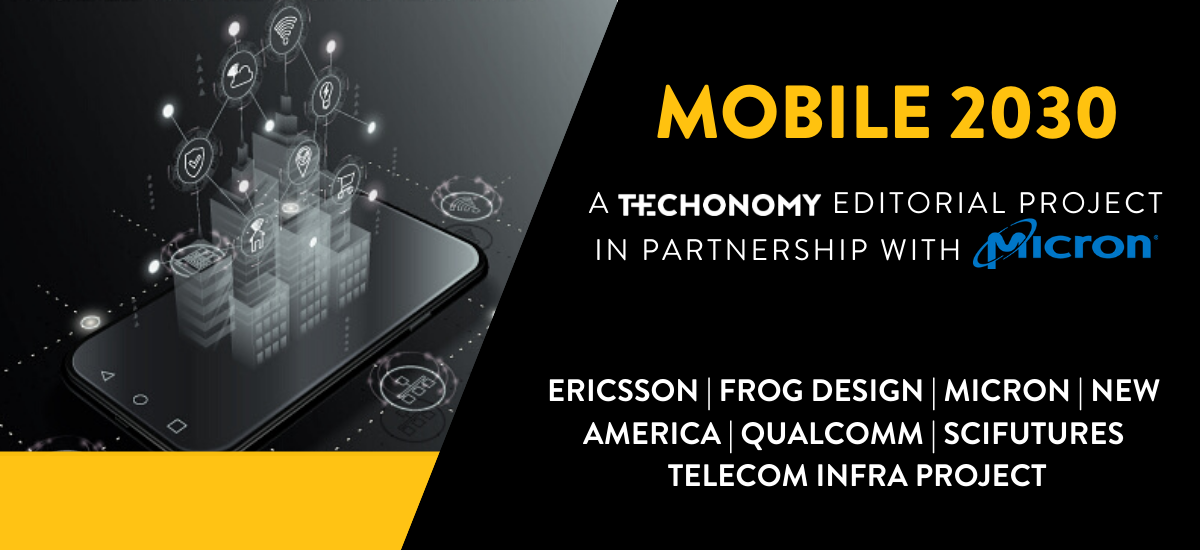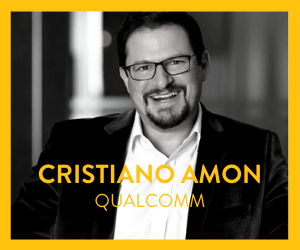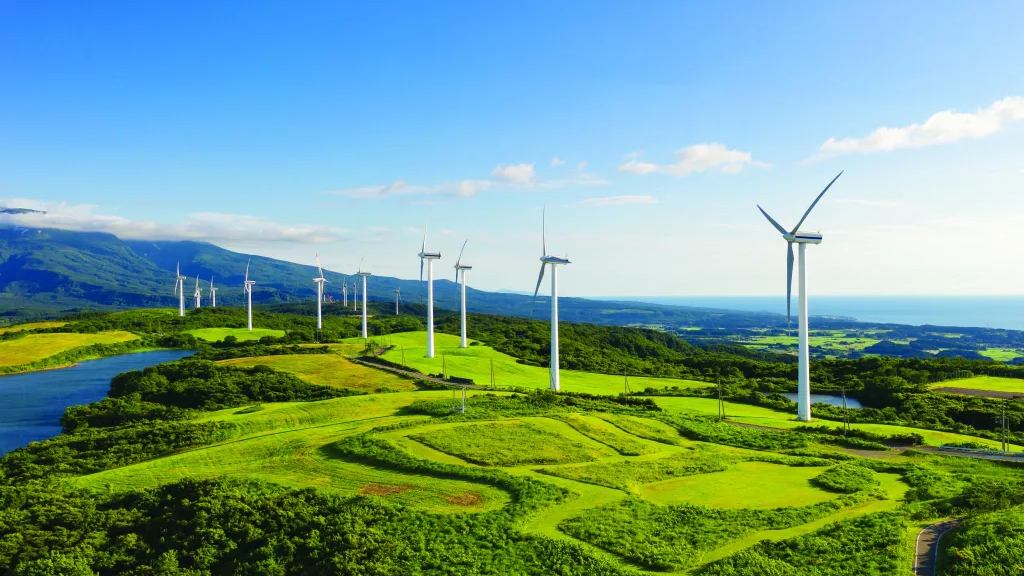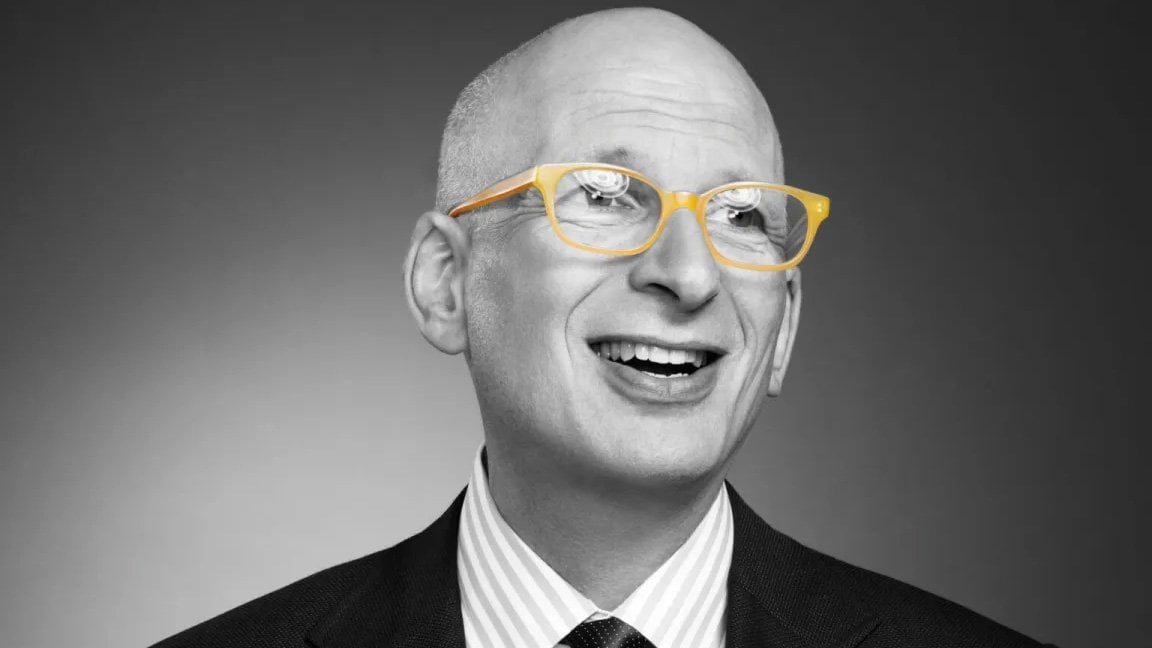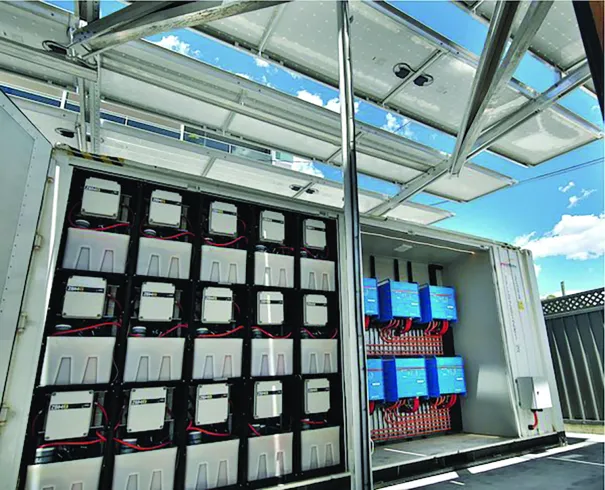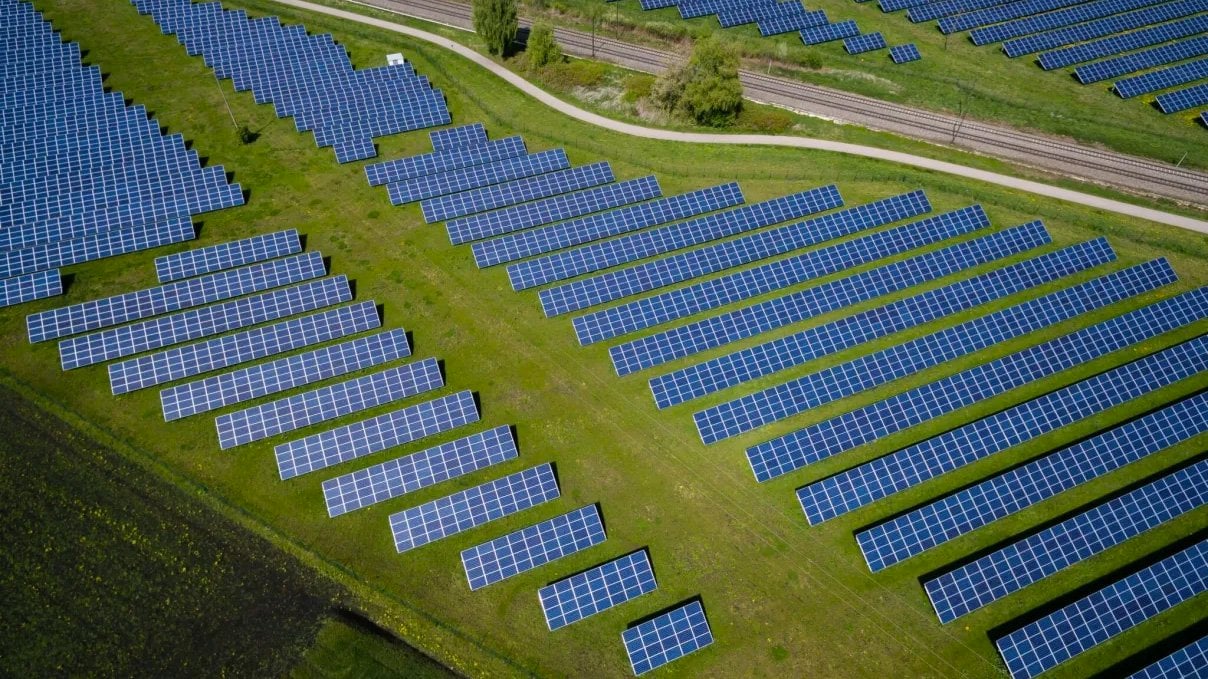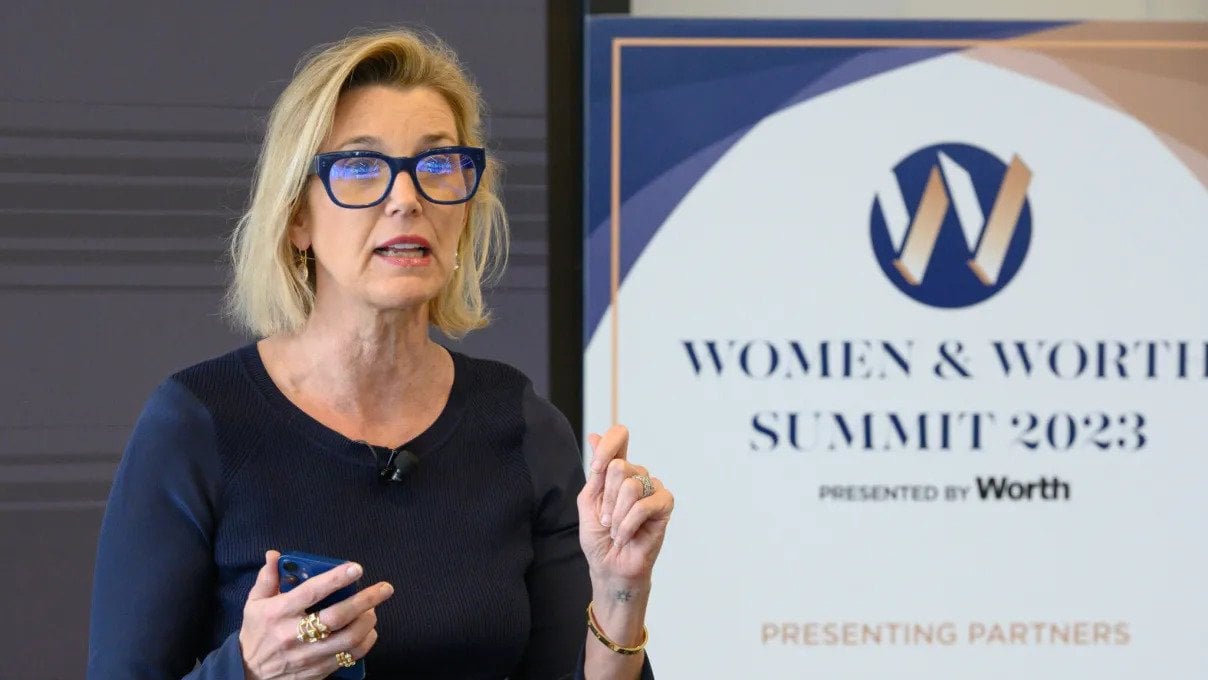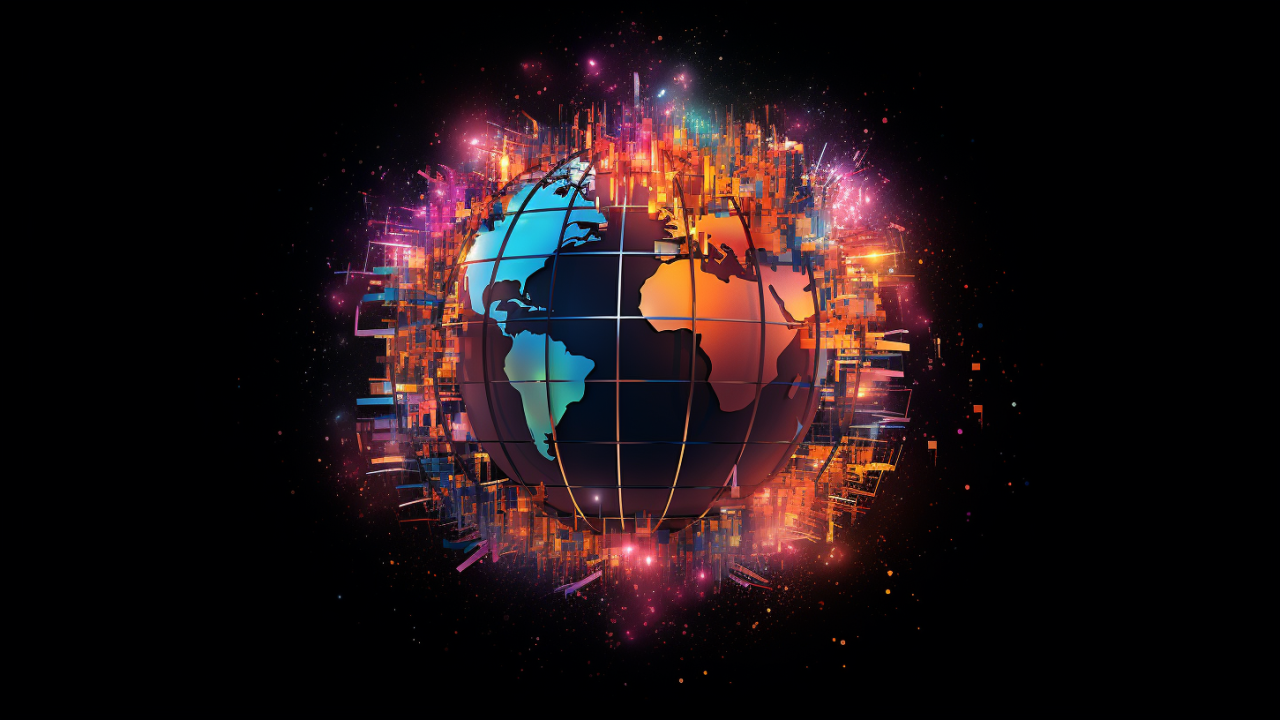Mobile 2030: A Special Project from Techonomy and Micron Technology
“By 2030, mobile will no longer only be associated with a phone or tablet. Content will be intelligent, ethical, and highly personalized. Interactions will be immersive, seamless, and ubiquitous.” So writes Ari Popper, whose SciFutures consultancy uses science fiction techniques to predict the future. Popper contributed his thoughts to a Techonomy special project, Mobile 2030, through which we aim to outline how mobile technologies will change our lives in a decade. What struck us is how consistently optimistic, and even consistent in their predictions, were the experts whose ideas we solicited (though Popper was an outlier in saying networks of the future will actually be ethical).
“As our devices continue to get smarter, they will recognize the person using them and adapt to that user’s context,” wrote Raj Talluri, who runs the mobile business unit at memory and storage manufacturer Micron Technology, which partnered with Techonomy on this project. “Your device will be totally aware and personalized to you.”

What the experts foresee is a world where much of the promise many have long hoped for from mobile begins to be genuinely fulfilled for individuals and society. The world by 2030 will become connected by multi-dimensional 5G networks, they say, and even the beginnings of 6G, whatever that turns out to be. The wide-ranging capabilities of 5G will enable remarkable transformations in all our lives, and not only in the affluent parts of the world. “The biggest change will be bandwidth abundance, and the obliteration of practical distinctions between wired and wireless networks,” writes Michael Calabrese, director of the Wireless Futures Program and the Open Technology Institute at New America, a non-profit that advocates for an open and universally accessible internet.
Remember, these aren’t dreamers. These are architects and advocates for wireless whose every day is spent working to understand exactly this question. Cristiano Amon is president of Qualcomm, a central company building the future of wireless: “2030 will see the establishment of hundreds of thousands of wireless networks around the world, bringing more reconfigurable and better-connected factories, hospitals, schools…and more.” Peter Linder is head of 5G marketing at Ericsson, another of the most important companies architecting the future ecosystem. “The digital and physical world will blend into each other everywhere, not just at homes and workplaces,” he writes. “All will have access to digital learning, from kindergarten to retirement.”
The likely transformation of key societal activities through a more reliable, flexible, and powerful wireless network was a theme running throughout the contributions Techonomy received. Healthcare in particular is an area where the experts expressed great optimism. “Mobile healthcare (mHealth) will see the most impactful changes, with the removal of friction…between providers and patients,” wrote Andrew Zimmerman and Robert Tuttle, president and executive technology director, respectively, at design and consulting firm Frog Design. Added Amon of Qualcomm: “Consider a doctor with AR glasses that combine real-time data from the patient’s body sensors with machine learning recommendations from edge cloud processing in the hospital, as part of a reimagined medical system.”

Our physical devices will be dramatically easier to use and more natural-feeling, according to the experts. “Consumers will stop dealing with app installs,” explained Zimmerman and Tuttle, who said people will instead “subscribe to services that will be automatically provisioned across all devices in their personal ecosystem.” Adds Ericsson’s Linder: “Enhanced mobile broadband [will] deliver video with higher quality, streaming of games to mobile devices, and may deliver ‘anything-reality,’ moving beyond today’s AR and VR, without wires, to glasses or other devices.” Calabrese of Open Technology Institute agrees: “Consumers will connect to anything and everything in their lives, including through augmented reality glasses, watches, earrings, and other wearables.” And Micron’s Talluri explains, “Your phone will behave totally differently than mine. AI and machine learning will continue to expand the possibilities of what our devices will know about and be able to do for us.”
But things could go well beyond carrying around a rectangle of glass. SciFutures’ Popper imagines instead how a future user might function: “Mary will interact with her ‘datasphere’ either through subvocalizations or subliminal gestures. And by 2030, she may interact via her thoughts and mental intentions. New breakthroughs in haptics and holographic tech will give her the ability to meaningfully connect with others not physically present.” (If we continue to live in a world defined in part by fear of viral contagion, that will be particularly important.) Add the Frog executives: “Devices and services will become hyper-aware of user context and dynamically adaptive to the current environment and needs. Users will seamlessly transition from one device to the next with their apps and services coordinating common state in real time.”
Qualcomm’s Amon makes a provocative prediction: “Just as ‘digital twins’ are now being used to optimize systems with increasing amounts of data, I believe by 2030 we will see the mobile ecosystem move much further into human augmentation, bringing improvements to our health, learning, and productivity.” He says it won’t just be advances in processing and mobile technology that makes that possible, but even bioengineering. We could be headed towards some sort of cyborg future.
But if we want a more equal future, we will need everyone to have access to these multi-dimensional future networks. Amon thinks it’s possible: “We are taking on the challenge to transform the topology of the internet, through the establishment of cloud-to-mobile edge networks that will enable faster and more secure connections for all. This will be essential to digest the exponential growth and interconnected needs of billions of people and devices over the next decade.”
“Nearly half of the world’s population still does not have access to the internet,” writes Attilio Zani, executive director of the Telecom Infra Project, a consortium of companies that aim to collectively build standards and systems to rapidly advance global connectivity. “For many of those who do, the quality of their connection doesn’t allow…reliable ways to communicate with others, remote working, online education, or streaming entertainment.” But cheaper and more “deeply-interoperable” networks will emerge, Zani says. The goal is “expanding to all corners of the world.” He rounds out the optimism: “This will usher in a new wave of economic opportunities and efficiencies–from minimizing waste and new smart technology to the automation of industries.”
Similarly, gaps within countries between urban and rural should diminish, says Ericsson’s Linder. “A 5G-powered clever countryside will reduce the digital gap with smart cities, so all regions will begin to share the same kind of mobile experience.” Open Technology Institute’s Calabrese expects all this connectivity will be so well-designed and operate so well it will feel effortless and seamless: “High-capacity, low-latency wireless connectivity will be virtually invisible to the average person, much like electricity is today.”
For full predictions from each respondent, see these pages:
- Ari Popper, SciFutures
- Raj Talluri, Micron Technology
- Michael Calabrese, Open Technology Institute, New America
- Cristiano Amon, Qualcomm
- Peter Linder, Ericsson
- Andrew Zimmerman and Robert Tuttle, Frog Design
- Attilio Zani, Telecom Infra Project
Techonomy and Micron are currently surveying to further gauge how 2030 will look, and we want to hear from YOU. Please fill out the <10 minute survey at this link. We’ll be sharing the results of that survey soon.

